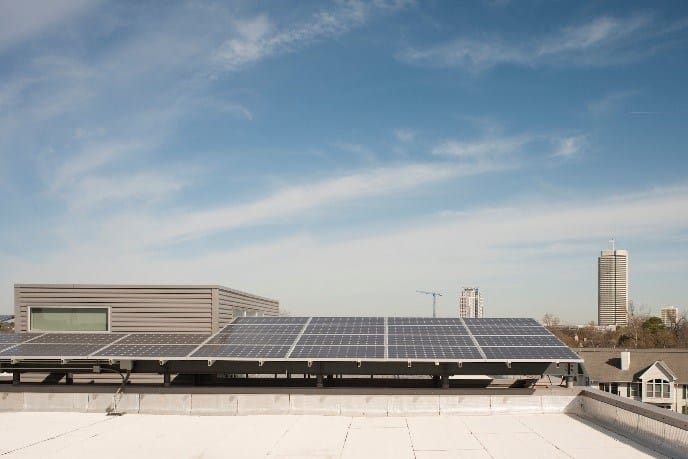This post was originally published on Eco Watch
According to the latest U.S. Energy Storage Monitor report by American Clean Power Association (ACP) and Wood Mackenzie, installations of both grid-scale and residential energy storage in the U.S. are continuing to rise, even reaching record highs in the third quarter of 2024.
Grid-scale energy storage reached a record for third-quarter installations, hitting 3,806 MW installed and 9,931 MWh deployed for Q3 2024. According to ACP and Wood Mackenzie, these numbers are 80% and 58% higher, respectively, compared to just one year prior.
The residential market in particular has seen rapid expansion, reaching an all-time quarterly record 346 MW of installed residential energy storage in Q3 2024. This represents a 63% increase just from Q2 2024.
“The rapid energy storage deployment we’re seeing in the United States not only enhances reliability and affordability but also drives economic expansion,” Noah Roberts, vice president of energy storage for ACP, said in a statement. “This additional storage capacity is helping meet increasing energy demand and is supporting growing industries like manufacturing and data centers. Energy storage is crucial for energy security and to help outpace rising demand.”
Texas and California led the way for grid-scale energy storage installations for Q3, with Texas tripling its installations compared to Q2.
Three states are driving growth of residential energy storage: California, Arizona and North Carolina, with 56%, 73% and 100% increases in residential storage for Q3 of this year compared to one quarter prior.
Wood Mackenzie analysts predicted a 30% growth in energy storage installations for 2024, but growth rate could slow to around 10% from 2025 to 2028. According to ACP and Wood Mackenzie, grid-scale installations are expected to increase by more than double, to 63.7 GW, by 2028, and residential energy storage is predicted to reach a total 10 GW by 2028.
While storage expansion could remain steady, experts are concerned whether the next administration under president-elect Donald Trump will disrupt progress with changes to current tax credits or increases in tariffs.
Currently, experts at International Energy Agency (IEA) predicted falling battery storage costs by up to 40% by 2030, Reuters reported. This could increase resilience and reliability of clean energy sources, in addition to making clean energy and storage costs cheaper than fossil fuel sources.
“We are seeing the energy storage industry fill a real need across the country to provide reliability in an affordable and efficient manner for communities,” John Hensley, SVP of Markets and Policy Analysis at ACP, said in a statement. “With 64 GW of new energy storage expected in the next four years, the market signal continues to be clear that energy storage is a critical component of the grid moving forward.”
The post U.S. Residential Energy Storage Installations Reach a Record High appeared first on EcoWatch.





0 Comments